SSZTCC1 august 2015 TPS92560
No, not the movie series - this post is about raising awareness of issues with LED lighting solutions.
Worldwide, I see new buildings with LED bulbs flickering or just not working, as shown in this recent sighting at a popular pub in Hong Kong (Figure 1).
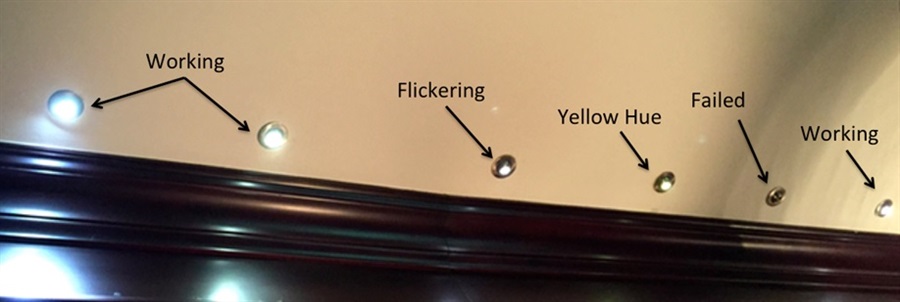 Figure 1 MR16 Bulbs at a Restaurant in
Kowloon, Hong Kong
Figure 1 MR16 Bulbs at a Restaurant in
Kowloon, Hong KongAren’t LED lighting solutions supposed to be more efficient and last longer? Yes, LED bulbs do last longer than traditional bulbs. So if LED bulbs last longer, why do we see flickering or failed bulbs? It turns out that the electronic transformers powering the LED bulbs have either failed or are close to failure. And that’s why we need to focus on saving the transformers.
What is an electronic transformer (e-transformer), and why does it fail?
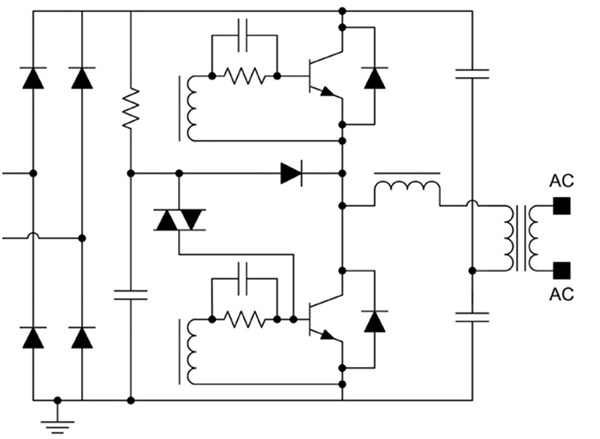 Figure 2 Electronic Low-voltage
Transformer (ELVT) Circuit Diagram
Figure 2 Electronic Low-voltage
Transformer (ELVT) Circuit DiagramA transformer, shown in Figure 2 above, transforms a high AC voltage (120VAC or 240VAC to high-frequency 12VAC) for ambient lighting solutions like MR16 bulbs. Most e-transformers are sized for a nominal current into the bulb. With resistive filament bulbs, this is easy. With LED bulbs, the 12VAC must be turned into a DC voltage and often boosted up to a higher voltage to properly regulate current in the LEDs. (There are usually several LEDs in a single bulb).
With some LED lighting solutions, the electronics controlling the LED current may pull more current than the transformer was designed to support. Why does this happen? See a typical MR16 schematic, shown in Figure 3.
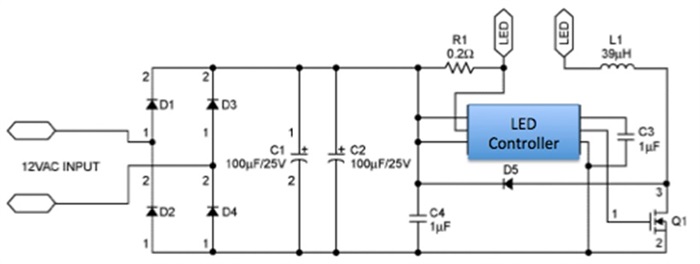 Figure 3 Typical MR16 Schematic
Figure 3 Typical MR16 SchematicAs the 12VAC voltage rises, there is inrush current into capacitors C1 and C2. Depending on the e-transformer’s capability, you may see the following peak currents (see Figure 4). Currents in excess of the e-transformer’s rating may cause failure for a number of reasons such as transistor breakdown or possibly excessive heating degrading transformer windings.
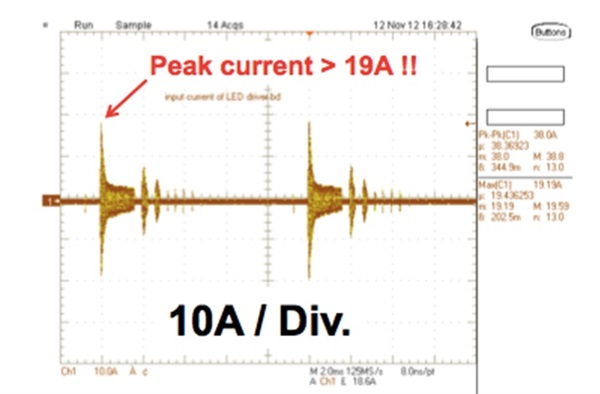 Figure 4 Excessive Peak Current in
Common MR16 Solutions
Figure 4 Excessive Peak Current in
Common MR16 SolutionsIf these peak currents cause the transformer to fail, replacing the bulb won’t solve the problem. Replacing the e-transformer does solve the problem – in the short term. Since the source of the problem was in the electronics, this solution is only a temporary fix. Also, getting behind the wall to replace the transformer is normally a lot harder than just replacing the bulb. This is likely why most building owners let their bulbs flicker or fail.
How do you prevent transformer failure? TI has a solution to limit input power, so building owners can make sure that they never see large currents surge into the electronics. The TPS92560 removes the need for input capacitors and integrates half of the diode rectifier to better control input power (Figure 5).
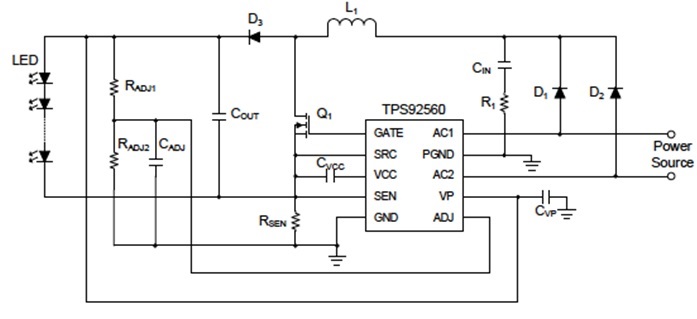 Figure 5 Input Capacitor Free MR16
Lighting with TPS92560
Figure 5 Input Capacitor Free MR16
Lighting with TPS92560As a result, the peak current from the transformer can remain under 1.5A (Figure 6).
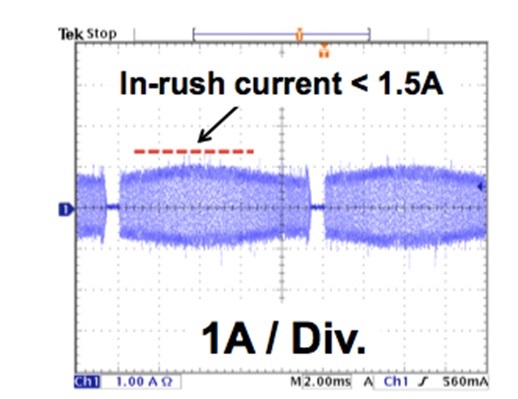 Figure 6 Peak Inrush Current with
TPS92560
Figure 6 Peak Inrush Current with
TPS92560By minimizing the current out of the e-transformer, you can save the e-transformer and minimize replacement costs.
Additional Resources:
- See the TPS92560 Simple Led Driver for MR16 and AR111 Applications data sheet for more details.
- Consider evaluation kits and reference designs to jumpstart your design.
- Watch a TPS92560 video.
- See more information on TI’s LED lighting solutions: www.ti.com/led